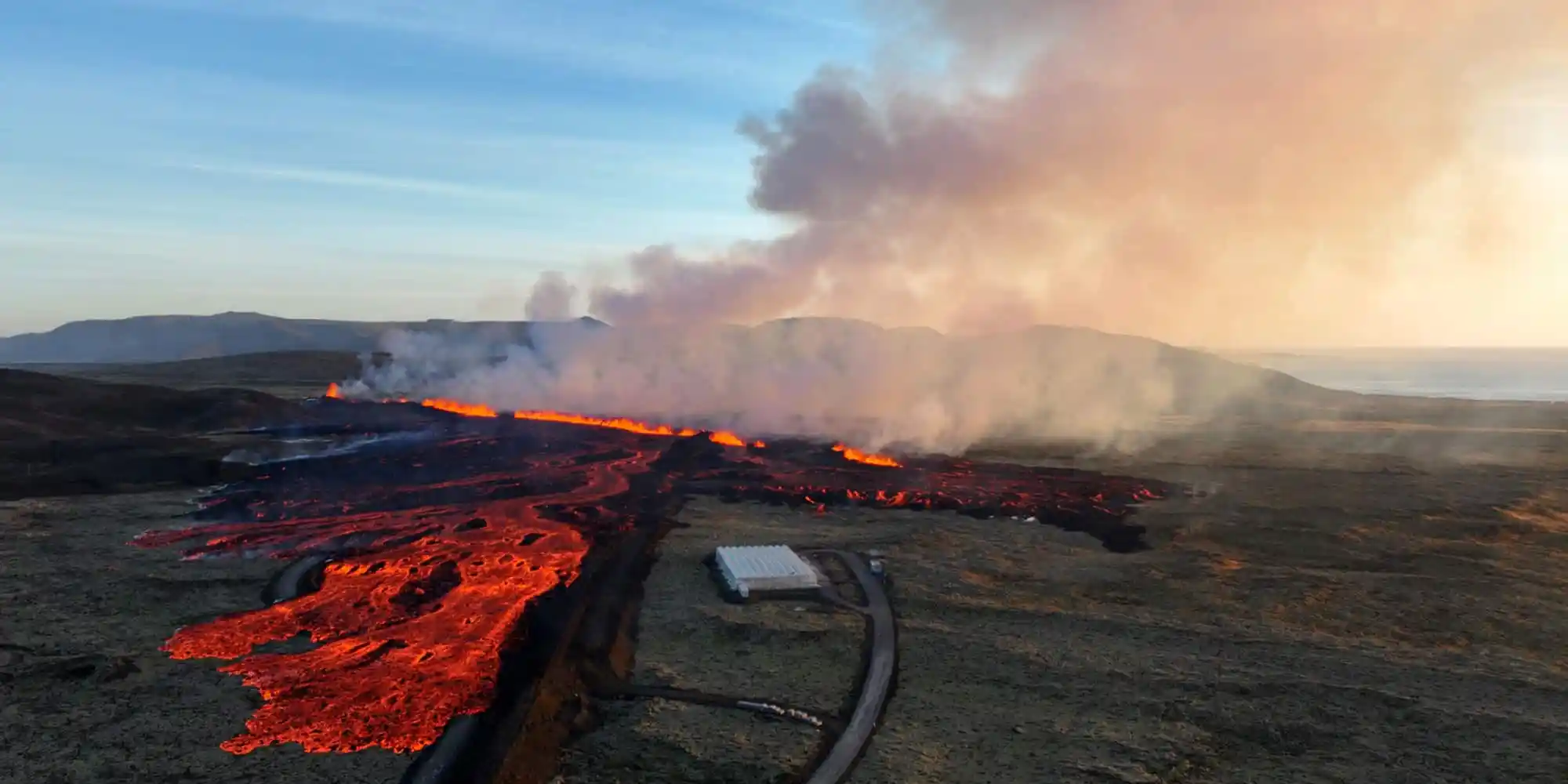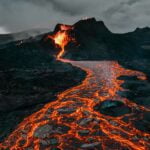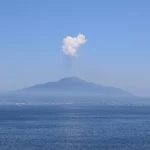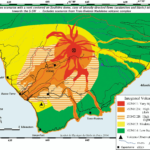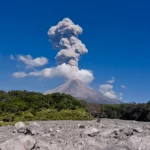Get ready for an exciting ride into the wild world of volcanoes! In “Unraveling Volcanic Mysteries,” we’ll explore how scientists are using awesome tools like earthquake detectors and chemistry to understand these fiery mountains. They’re learning how to read volcanic messages, so they can warn people and keep communities safe. So, buckle up, because we’re about to uncover the thrilling secrets of volcanoes!
Volcano Monitoring and Prediction Techniques: Unlocking Nature’s Secrets
Volcanoes, those awe-inspiring natural wonders, can unleash unimaginable power and destruction. But beneath their enigmatic beauty, scientists have embarked on a thrilling mission: understanding and predicting their unpredictable behavior.
Like detectives on a high-stakes case, volcanologists have assembled an arsenal of tools to unravel the mysteries of volcanic eruptions. Their secret weapons include:
Seismic Sentinels: Seismographs
Imagine a volcano as a ticking time bomb. Seismographs, akin to highly sensitive microphones buried underground, listen intently for the telltale vibrations of earthquakes and tremors. These subterranean rumblings often herald the movement of magma, providing early clues to an impending eruption.
GPS and InSAR: Measuring Ground Ups and Downs
Magma’s sneaky ascent beneath a volcano can also cause subtle shifts in the Earth’s surface. Global Positioning Systems (GPS) and Interferometric Synthetic Aperture Radar (InSAR) track these minuscule changes, giving scientists a sneak peek into the volcano’s inner workings.
Gas Monitors: Sniffing Out Magma’s Breath
Volcanic gases, like whispered secrets, can reveal a volcano’s intentions. By analyzing the composition and volume of these gaseous emissions, scientists can detect changes that hint at magma’s movement. It’s like eavesdropping on the volcano’s internal communication system.
Thermal Spies: Infrared Imaging
When a volcano’s temperature starts to rise, it’s a sure sign of volcanic activity. Thermal imaging cameras, like heat-seeking missiles, can pinpoint these telltale temperature changes, providing valuable insights into the volcano’s state.
Into the Future: New Techniques on the Horizon
The relentless quest to unlock volcanic secrets continues. Scientists are developing cutting-edge techniques that push the boundaries of prediction:
- Machine Learning: Data Deciphering Wizards
Like supercharged detectives, machine learning algorithms sift through mountains of data, identifying patterns and clues that humans might miss. These data detectives can uncover hidden signs of an impending eruption.
- Satellite Sentinels: Eye in the Sky
Satellites, like orbiting telescopes, monitor volcanic surfaces from a celestial vantage point. By observing subtle changes in the landscape, these watchful guardians can detect the telltale signs of volcanic unrest.
- Unmanned Aerial Explorers: Drones
Drones, nimble and daring, venture into perilous areas where humans cannot tread. Equipped with sensors and cameras, these flying spies gather vital data in dangerous and inaccessible terrain.
As these innovative techniques mature, they hold the promise of enhancing our understanding and prediction capabilities, empowering us to provide more accurate early warnings and safeguard humanity from the unpredictable wrath of volcanoes.
- If you’re intrigued by the destructive yet captivating power of nature, be sure to explore our comprehensive guide to the famous volcanoes that have shaped our planet.
- Delve into the fascinating diversity of the Earth’s volcanic wonders by discovering the types of volcanoes that exist, ranging from gentle giants to explosive behemoths.
- Stay informed about the potential dangers associated with volcanic activity by learning about the volcanic hazards and risks that communities near volcanoes face.
- Travel back in time to witness the catastrophic events that have left an indelible mark on human history by exploring the famous volcanic eruptions in history.
- Unravel the intricate relationship between volcanic activity and our planet’s climate by investigating the intriguing topic of volcanoes and climate change.
- Plan your next adventure with our expert guide to volcano tourism and safety, ensuring an unforgettable and safe experience amidst these awe-inspiring natural wonders.
- Dive into the fascinating world of volcanic islands and archipelagos, uncovering the unique geological processes that have given rise to these isolated volcanic paradises.
- Embark on a journey into the heart of volcanoes by exploring the diverse array of volcanic rocks and minerals that hold clues to the Earth’s volcanic past.
- Discover the sustainable and renewable energy potential of volcanoes by examining the innovative technologies used to harness geothermal energy from volcanoes.
- Expand your knowledge beyond Earth by exploring the intriguing presence of volcanoes on other planets, uncovering the volcanic landscapes that shape our solar system.
What Techniques Detect Volcanic Earthquakes and Tremors?
When volcanoes get restless, they don’t just rumble and shake—they give off little earthquakes and tremors, like tap dances before a big show. Scientists have got some clever ways to detect these tiny vibrations to keep us in the know about what’s brewing beneath the Earth’s surface.
Seismic Monitoring: Listening to Volcanic Heartbeats
Think of volcanoes as giant hearts pumping magma instead of blood. Seismic monitoring is like putting a stethoscope to the Earth to listen to those heartbeats. Seismometers—sensitive instruments placed around volcanoes—record those subtle vibrations caused by magma movement or other volcanic processes. It’s like reading Morse code from the volcano, telling us what’s going on inside.
Ground Deformation: Measuring the Earth’s Wiggles
Volcanoes don’t just shake; they also change shape ever so slightly. Ground deformation measurements track these subtle changes in the Earth’s surface. Imagine a balloon filling up—the ground around a volcano does something similar when magma moves or other volcanic fluids build up. These measurements give scientists clues about what’s happening beneath the surface and how close an eruption might be.
Volcanic Gas Analysis: Sniffing Out Volcanic Breath
Volcanoes are like smokers, releasing gases that can tell us a lot about their health. Scientists monitor volcanic gases—like carbon dioxide and sulfur dioxide—to detect changes in their composition or volume. It’s like checking a volcano’s breath for signs of an impending explosion.
Gravity and Magnetic Field Shifts: Feeling the Volcanic Force
Gravity and magnetic fields around volcanoes can also be affected by volcanic activity. As magma moves or volcanic materials shift, the surrounding area experiences subtle changes in gravity and magnetic fields. Scientists use instruments to measure these changes, giving them another way to monitor the volcano’s inner workings.
Putting It Together: Predicting Eruptions with Volcanic Monitoring
Like a doctor monitoring a patient’s vital signs, scientists use seismic monitoring, ground deformation measurements, volcanic gas analysis, and gravity/magnetic field changes to keep tabs on volcanoes. By combining all this data, they can piece together a more complete picture of what’s happening underground and predict eruptions more accurately. It’s like putting together a puzzle to prevent a volcanic disaster.
Pros of Volcanic Monitoring:
- Accurate eruption predictions: Monitoring helps scientists pinpoint when an eruption is likely to occur, giving communities time to prepare.
- Avoiding casualties: With early warnings, people living near volcanoes can evacuate before eruptions, saving lives.
- Protecting infrastructure: Monitoring can identify areas most at risk, allowing officials to protect critical infrastructure like bridges and roads.
Cons of Volcanic Monitoring:
- Limited precision: Predictions can sometimes be imprecise, leading to false alarms or missed warnings.
- Technological challenges: Monitoring equipment can fail or require maintenance, affecting data accuracy.
- Costly operation: Maintaining and operating monitoring systems requires significant financial resources.
How Does Ground Deformation Predict Volcanic Eruptions?
Imagine a stubborn balloon inflating under a blanket. That’s what’s happening beneath a volcano preparing to erupt. As the volcano’s magma bubble expands, it pushes up on the ground, creating a bulge.
Scientists have a secret weapon to detect these changes: tiltmeters. Think of them as super-sleuths that can catch even the slightest ground tilt. By keeping an eye on the tiltmeter data, they can follow the rise and fall of the magma bubble.
If the bulge grows rapidly, it’s like the balloon is getting dangerously close to bursting. This means the magma is moving towards the surface, building pressure like a ticking time bomb. With this information, scientists can give people a heads-up and prepare for the worst.
Here’s a breakdown:
- Ground deformation whispers secrets: Changes in the ground’s surface reveal volcanic unrest.
- Tiltmeters are the eyes and ears: They monitor ground tilt, painting a picture of magma movements.
- Volcano detectives follow the clues: Data on deformation and earthquakes provides clues about the volcano’s inner workings.
- Predicting the fiery future: Patterns in ground deformation can help scientists predict eruptions, giving communities valuable time to plan.
Quick Stats:
| Deformation Indicator | Eruption Signal |
|---|---|
| Slow, gradual changes | Magma buildup |
| Rapid, intense changes | Impending eruption |
| Recurring patterns | Reliable eruption predictor |
How can scientists effectively assess seismicity for eruptions?
Picture this: you’re chilling at home, minding your own business, when suddenly the ground beneath you starts shaking. What gives? Chances are, you’re in the vicinity of a volcano, and that’s its seismic activity saying “hello.”
Scientists have a special way of listening to these volcanic chatterboxes: seismic monitoring. It’s like putting giant ears around a volcano, picking up on all the tiny vibrations in the ground caused by magma moving and gases bubbling.
Seismic Snooping 101
Here’s how they do it:
- Measure the shake-o-meter: The frequency of these seismic whispers tells scientists what kind of volcanic shenanigans are going on. High-pitched noises mean gas is escaping, while low-pitched rumbles signal the movement of mighty magma. The volume of the shakes indicates how intense the activity is.
- Pinpoint the epicenter: By timing how long it takes these seismic waves to reach different listening posts, scientists can pinpoint where the action’s happening. This helps them find the volcanic vent or crack where the magma’s trying to break free.
- Track the seismic symphony: Keeping tabs on how seismic activity changes over time is like watching a volcanic movie. It shows scientists how the volcano’s activity is evolving and whether it’s getting close to eruption time. If the shaking suddenly picks up pace or gets louder, it’s like the volcano’s saying, “Get ready, folks!”
Benefits of Seismic Listening
By deciphering the seismic chatter, scientists can:
- Predict eruptions: Forecasting when a volcano might blow its top is like having a superpower. It gives authorities time to evacuate people and minimize the damage.
- Develop eruption strategies: Understanding what’s going on inside the volcano helps scientists devise plans to protect nearby communities.
Seismic monitoring is a vital tool in the volcanic prediction toolkit. It’s like having a backstage pass to the volcanic show, helping scientists keep an eye on these natural wonders and keep us safe.
FAQ
Q1: What techniques do scientists use to monitor volcanoes?
A1: Scientists employ various techniques to monitor volcanoes, including seismographic detection of earthquakes, measurement of ground deformation, analysis of volcanic gas emissions, and monitoring changes in gravity and magnetic fields.
Q2: How does seismic monitoring help in predicting eruptions?
A2: Seismic monitoring is a valuable tool for forecasting eruptions by detecting earthquakes and tremors that often precede them. These seismic signals provide information about the processes occurring inside volcanoes, aiding in understanding the likelihood and timing of eruptions.
Q3: What is the significance of ground deformation in volcano monitoring?
A3: Ground deformation is a crucial indicator of volcanic unrest and can predict eruptions. Magma and gas movement beneath a volcano can cause the ground to deform, which is detectable by precise instruments. Monitoring ground deformation allows geologists to assess the size, pressure, and depth of a volcano’s magma reservoir, providing valuable insights for eruption forecasting.
Q4: How has technology improved volcanic monitoring and prediction?
A4: Technological advancements have significantly improved volcanic monitoring and prediction. Enhanced seismic and ground deformation monitoring systems now provide more precise data, enabling scientists to make more accurate forecasts. Additionally, real-time data transmission and analysis tools allow for rapid and efficient monitoring, facilitating timely warnings and risk mitigation efforts.
Q5: What are the benefits of monitoring volcanoes?
A5: Monitoring volcanoes provides several benefits, including early warnings of potential eruptions, risk assessment, and mitigation strategies. By understanding the activity of volcanoes, scientists can alert communities to impending eruptions, allowing for evacuation and preparedness measures. Monitoring also helps in assessing the potential impact of eruptions, guiding policymakers in developing appropriate contingency plans and evacuation zones.
- Is a Bird an Animal?Science Explains Avian Classification - April 16, 2025
- The Peasant St John Gastropub: London’s Hidden Gem - April 16, 2025
- Discover Your Personality: Egyptian Feet & Your Traits - April 16, 2025
